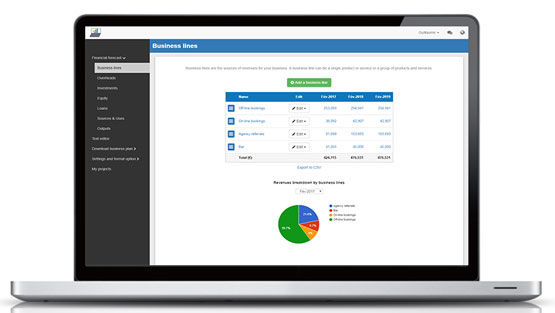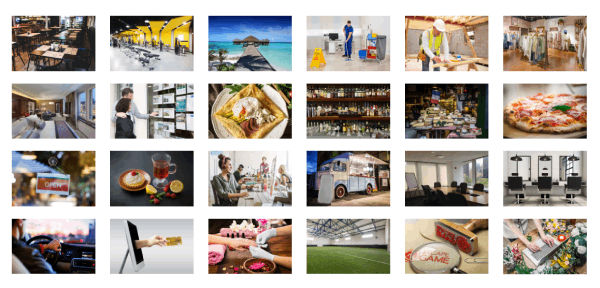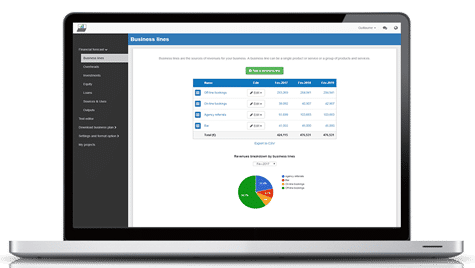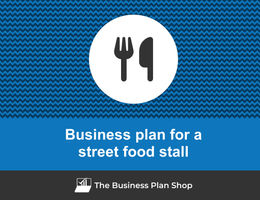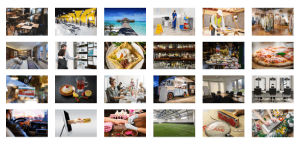How to open a street food stall?
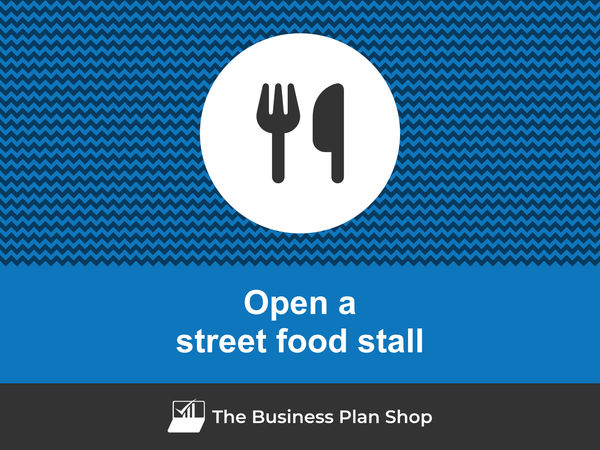
Are you keen to open a street food stall but don't know where to begin? Then you're in luck because this guide will lead you through all the steps required to check if your business idea can be profitable and, if so, turn it into a reality.
Our guide is for prospective entrepreneurs who are thinking about starting a street food stall no matter how far they are in their journey - whether you’re just thinking about it or in the middle of market research this guide will be useful to you.
Think of this as your blueprint: we cover everything you need to know about opening a street food stall and what key decisions you’ll need to make along the way.
Ready? Let’s get started!
Learn how a street food stall works
Before you can start a street food stall, you need to have a solid understanding of how the business works and what are its main revenue streams.
This will give you a glimpse into the profitability potential of your venture, whilst allowing you to decide whether or not it is a good fit for your situation (current skill set, savings and capital available to start the business, and family responsibilities).
It may be that creating a street food stall is an excellent idea, but just not the right one for you.
Before starting their own company, successful entrepreneurs typically:
- Consult with and take advice from experienced street food stall owners
- Acquire hands-on experience by working in an operational street food stall
- Take relevant training courses
Let's explore each option in a bit more detail.
Consulting with and taking advice from experienced street food stall owners
Having "seen it all", established business owners can offer valuable insights and hands-on advice drawn from their own experiences.
This is because, through both successes and failures, they've gained a more informed and practical understanding of what it takes to build and sustain a successful street food stall over the long term.
Acquiring hands-on experience by working in an operational street food stall
If you want to open a street food stall, having industry-specific experience is imperative because it equips you with the knowledge, network, and acumen necessary to navigate challenges and make informed decisions critical to the success of your future business.
You'll also be able to judge whether or not this business idea is suitable for you or if there might be conflicts of interest with your personal life (for example, long working hours could be incompatible with raising young children).
This work experience will also help you to make contacts in the industry and familiarise yourself with customers and their expectations, which will prove invaluable when you set up your street food stall.
Take relevant training courses
Taking a training course is another way of familiarising yourself with the business model of your future activity before you decide to make the jump.
You may choose to complete a training course to obtain a certificate or degree, or just take online courses to acquire practical skills.
Before going any further in setting up your venture
Before you go any further with your plans to open a street food stall, make sure you have a clear vision of what it will take in terms of:
- What skills are needed to run the business successfully (do you have some or all of these skills?)
- What a standard working week looks like (does it suit your personal commitments?)
- What sales potential and long-term growth prospects the street food stall has (compare this with your level of ambition)
- What options you'll have once you decide to retire (or move on and inevitably sell the company)
This analysis of the business model and the constraints of the business should help you to check that your idea of launching a street food stall fits your entrepreneurial profile.
If there is a match, it will then be time to look at assembling the founding team of your business.
What is the ideal founding team for my street food stall?
The next step to opening your street food stall, is to decide whether to assemble an ideal team or venture solo.
The failure rate for business start-ups is high: almost half don't make it past the five-year mark, and setting up a street food stall is no exception.
Starting with a group of co-founders helps reduce this risk as each of you brings complementary skills and enables the financial risk to be spread on multiple shoulders.
However, managing a business with multiple partners comes with its own set of challenges. Disagreements among co-founders are quite prevalent, and they can pose risks to the business. That's why it's essential to carefully weigh all aspects before launching a business.
To help you think things through, we recommend that you ask yourself the following questions:
- Do you need more co-founders for this venture?
- Do you share the same vision and ambition as your potential partners for this project?
- What is your plan B?
Let's look at these issues in more detail.
Do you need more co-founders for this venture?
To answer this question you will need to consider the following:
- Are there any key skills missing for which you would rather have a business partner than recruit an employee?
- Do we have enough equity? Would the company benefit from more capital at the outset?
- Will the proposed number of founders make it easy to make decisions (an odd number of partners, or a majority partner, is generally recommended to avoid deadlock)?
In simple terms, co-founders bring skills, money, or both to the table. Having more partners is beneficial when there's a lack of either of these resources.
Do you share the same vision and ambition as your potential partners for this project?
One of the main sources of conflict between co-founders comes from a lack of alignment on the long-term vision.
To avoid any risk of disagreement, it is advisable to agree on ambitions from the outset and to provide an exit mechanism for one of the partners in the event of disagreement.
What is your plan B?
We hope your street food stall takes off and thrives, but it's smart to have a "plan B" just in case things don't go as expected.
How you tackle potential failure can vary broadly depending on the type of co-founders (close friend, spouse, ex-colleague, etc.) and the personal circumstances of each of them.
For example, launching a family business with your spouse might seem exciting, but if it fails, you risk losing all of your household income at once, which might be stressful.
Likewise, starting a business with a friend might strain the friendship if things go wrong or if tough decisions need to be made.
Before diving in, make sure to thoroughly think about your choices. This way, you'll be ready for whatever might come your way when starting up.
Is there room for another street food stall on the market?
The next step in starting a street food stall is to undertake market research. Now, let's delve into what this entails.
The objectives of market research
The goal here is straightforward: evaluate the demand for your business and determine if there's an opportunity to be seized.
One of the key points of your market analysis will be to ensure that the market is not saturated by competing offers.
The market research to open your street food stall will also help you to define a concept and market positioning likely to appeal to your target clientele.
Finally, your analysis will provide you with the data you need to assess the revenue potential of your future business.
Let's take a look at how to carry out your market research.
Evaluating key trends in the sector
Market research for a street food stall usually begins with an analysis of the sector in order to develop a solid understanding of the its key players, and recent trends.
Assessing the demand
After the sector analysis comes the demand analysis. Demand for a street food stall refers to customers likely to consume the products and services offered by your company or its competitors.
Looking at the demand will enable you to gain insights into the desires and needs expressed by your future customers and their observed purchasing habits.
To be relevant, your demand analysis must be targeted to the geographic area(s) served by your company.
Your demand analysis should highlight the following points:
- Who buys the type of products and services you sell?
- How many potential customers are there in the geographical area(s) targeted by your company?
- What are their needs and expectations?
- What are their purchasing habits?
- How much do they spend on average?
- What are the main customer segments and their characteristics?
- How to communicate and promote the company's offer to reach each segment?
Analyzing demand helps pinpoint customer segments your street food stall could target and determines the products or services that will meet their expectations.
Assessing the supply
Once you have a clear vision of who your potential customers are and what they want, the next step is to look at your competitors.
Amongst other things, you’ll need to ask yourself:
- What brands are competing directly/indirectly against your street food stall?
- How many competitors are there in the market?
- Where are they located in relation to your company's location?
- What will be the balance of power between you: are your competitors independent players or franchises?
- What types of services and products do they offer? At what price?
- Are they targeting the same customers as you?
- How do they promote themselves?
- Which concepts seem to appeal most to customers?
- Which competitors seem to be doing best?
The aim of your competitive analysis will be to identify who is likely to overshadow you, and to find a way to differentiate yourself (more on this see below).
Regulations
Market research is also an opportunity to look at the regulations and conditions required to do business.
Ask yourself the following questions:
- Do you need a special degree to open a street food stall?
- Are there necessary licences or permits?
- What are the main laws applicable to your future business?
At this stage, your analysis of the regulations should be carried out at a high level, to familiarize yourself with any rules and procedures, and above all to ensure that you meet the necessary conditions for carrying out the activity before going any further.
You will have the opportunity to come back to the regulation afterwards with your lawyer when your project is at a more advanced stage.
Take stock of the lessons learned from your market analysis
Market research should give you a definitive idea of your business idea's chances of commercial success.
Ideally, the conclusion is that there is a market opportunity because one or more customer segments are currently underserved by the competition.
On the other hand, the conclusion may be that the market is already taken. In this case, don't panic: the first piece of good news is that you're not going to spend several years working hard on a project that has no chance of succeeding. The second is that there's no shortage of ideas out there: at The Business Plan Shop, we've identified over 1,300 business start-up ideas, so you're bound to find something that will work.
How should I position my street food stall on the market?
The next step to start your street food stall is to define precisely the market positioning your company will adopt in order to capitalise on the opportunity identified during your market research.
Market positioning refers to the place your product and service offering occupies in customers' minds and how they differ from the competition. Being perceived as a low-cost solution, for example.
To find a concept and a market positioning that will resonate with your customers, you need to address the following issues:
- How can you differentiate yourself from your competitors?
- Do you have the option of joining a franchise to reduce risk?
- Is it better to start or buy a street food stall already in operation?
- How will you validate your concept and market positioning before investing in the business?
Let's look at these aspects in more detail.
How can you differentiate yourself from your competitors?
Opening a street food stall means starting with a major disadvantage compared with competitors already active on the market.
While you will have to create everything from scratch, your competitors already have everything in place.
Your competitors' teams know the business well, whereas yours has only just been recruited, their customers are loyal and they benefit from word of mouth that you don't yet have.
So you're going to need a solid plan to succeed in taking market share from your competitors and making your mark.
There are a number of aspects to consider in order to try to avoid direct confrontation if possible:
- Can you target a different customer base than your competitors?
- Can you offer products or services that are different from or complementary to what your competitors already sell?
- How will your competitors react to your street food stall entering their market?
- Can you build a sustainable competitive advantage that will enable you to compete with your current and future competitors?
Do you have the option of joining a franchise to reduce risk?
A proven way of reducing the risk of your business venture is to join a franchise.
Joining a street food stall franchise means you don't have to start from scratch. You benefit from the brand recognition of a group and support with operational processes, relations with suppliers, recruitment, etc.
On the flip side, being part of a franchise will restrict your personal freedom, and you'll have to pay an entry fee and an annual royalty (typically a percentage of your sales).
Nevertheless, where possible, starting up as a franchise is generally a good way of reducing risks, especially if you're up against competitors with well-known brands.
Please note, however, that franchising opportunities vary from country to country and region to region, so there is no guarantee that you'll be able to find a franchise.
Is it better to start or buy a street food stall already in operation?
The other alternative to setting up a new independent business is to buy out and take over a street food stall already in operation.
Here too, a takeover is a good way of reducing the risk of your project compared with a pure start-up.
Taking over a business has two enormous advantages over setting up a new one: you start out on an equal footing with your competitors since you take over the team and the customer base, and you don't increase the supply on the market enabling you to maintain the existing balance on the market where the business operates.
However, as with franchising, the capital requirements for a takeover are higher because the business will have to be bought from its previous owners.
How will you validate your concept and market positioning before investing in the business?
However you decide to set up your business, you will need to ensure that there is a good fit between what you sell and what customers are looking to buy.
To do this, you'll need to meet your target customers to present your products or services and check that they meet their expectations.
Where should I base my street food stall?
The next step in our guide on starting a street food stall involves making a key choice about where you want your business to be located.
Picking the ideal location for your business is like selecting the perfect canvas for a painting. Without it, your business might not showcase its true colors.
We recommend that you take the following factors into account when making your decision:
- Visibility and foot traffic: This is important for a street food stall as it will attract potential customers and increase sales.
- Parking space, road and public transport accessibility: Easy accessibility for customers is crucial for a street food stall, especially for those who are driving or taking public transportation.
- Proximity to target customers: Being close to the target customers, such as office buildings or tourist attractions, can increase the likelihood of attracting customers.
- Premises layout: The layout of the street food stall should be well-organized and efficient to ensure smooth operations and customer flow.
This list is not comprehensive and will have to be adjusted based on the details of your project.
The parameters to be taken into account will also depend on whether you opt to rent premises or buy them. If you are a tenant, you will need to consider the conditions attached to the lease: duration, rent increase, renewal conditions, etc.
Lease agreements differ widely from country to country, so it's essential to review the terms that apply to your situation. Before putting pen to paper, consider having your lawyer look carefully at the lease.
What legal form should I choose for my street food stall?
The next step to start a street food stall is to choose the legal form of your business.
The legal form of a business simply means the legal structure it operates under. This structure outlines how the business is set up and defines its legal obligations and responsibilities.
Why is your street food stall's legal form important?
Choosing the right legal form for your street food stall is important because this will affect:
- Taxation: your tax obligations depend on the legal structure you choose, and this principle applies to both personal income tax and business taxes.
- Risk exposure: some legal structures have a legal personality (also known as corporate personality) and limited liability, which separates them from the owners running the business. This means that the business would be liable rather than the owners if things were to go wrong (lawsuit, debt owed in case of bankruptcy, etc.).
- Decision-making and governance: how you make key decisions varies based on the legal form of your business. In some cases you might need to have a board of directors and organise general assemblies to enable shareholders to influence major decisions with their voting rights.
- Financing: securing funding from investors requires you to have a company and they will expect limited liability and corporate personality to protect them legally.
- Paperwork and legal formalities: the legal structure you select determines whether certain obligations are necessary, such as producing annual accounts, or getting your books audited.
Popular business legal forms
The specific names of legal structures vary from country to country, but they usually fall within the two main categories below:
- Individual businesses
- Companies
Individual businesses
Individual businesses, like sole traders or sole proprietorships, are made for self-employed entrepreneurs and freelancers rather than businesses which employ staff.
They benefit from straightforward administrative requirements, minimal paperwork to start, simpler tax calculations, and streamlined accounting procedures.
However, the downside is that there's typically no legal distinction between the business and the person responsible for day-to-day operations. This means the owner's personal assets are at risk if the business faces problems or goes bankrupt.
There is also no share capital in such a structure, meaning that individual businesses cannot raise equity from investors which seriously limits funding options.
Companies
Companies are versatile structures suited to projects of all sizes in terms of number of founders, number of employees and amount of capital.
They are a bit more complex to operate than individual businesses with more formalities, stringent accounting requirements, more complex tax implications, etc.
In return, they offer stronger protections to their shareholders. They usually benefit from having their own legal identity and limited liability, meaning co-founders and investors can only ever lose the amount of money they have put into the company.
For instance, if things were to go south (the company files for bankruptcy or there is a legal issue), the company would take the hit, safeguarding the personal assets of the founders and investors.
How should I choose my street food stall's legal structure?
Deciding on a legal form is easy once you've estimated your sales, decided whether or not you need employees and figured out the number of co-founders joining you.
It's essential to remember that a solid business idea will succeed no matter which legal structure you pick. Tax laws change regularly, so you can't rely on specific tax advantages tied to a particular structure when starting a business.
A proven approach is to look at what legal structures your top competitors are using, and go with the most common option as a working assumption. Once your idea is mature enough, and you're getting closer to officially registering your business, you can get advice from a lawyer and an accountant to confirm your choice.
Can I switch my street food stall's legal structure if I get it wrong?
Yes, changing your legal structure later is possible, though it may involve selling the old entity to a new entity in some cases, which adds further expenses. If you want to save on such costs, it makes sense to pick the correct legal form for your business the first time around.
How much money do I need to start a street food stall?
To answer this key question, we first need to look at the resources you'll need to launch your street food stall and keep it running on a daily basis. Let's take a look at what that entails.
Since each venture is distinct, providing an average budget for starting a street food stall is impossible.
We strongly advise careful consideration when reading estimates on the web. It’s best to ask yourself the following questions:
- Is my project similar (location, concept, planned size, etc.)?
- Can I trust where this information is coming from?
- Is the data fresh or stale?
Your thinking behind the investments and human resources required to launch and operate the business will then enable you to cost each item and include them in your financial forecast (which we'll look at later in this guide).
Once complete, the forecast will give you a precise idea of the initial investment required and profitability potential for your business idea.
Startup costs and investments to start a street food stall
Let's start with the investments. To set up a street food stall, initial working capital and investments can include the following items:
- Equipment: You will need to purchase equipment for your street food stall, such as a food truck, tent, cooking equipment, and utensils.
- Renovations: If you are setting up your stall in a fixed location, you may need to make renovations to the space to make it suitable for your business. This could include installing a kitchen, plumbing, and electricity.
- Furniture and Decor: You will need to purchase tables, chairs, and other furniture to create a comfortable and inviting space for your customers. Additionally, you may want to invest in decor to make your stall stand out and attract customers.
- Permits and Licenses: Depending on your location, you may need to obtain permits and licenses to operate your street food stall. These can include health permits, vending permits, and business licenses.
- Signage: A well-designed and eye-catching sign can help attract customers to your stall. Consider investing in a professional sign to make your stall easily identifiable and memorable.
Of course, you will need to adapt this list to your company's specific needs.
Staffing requirements to operate a street food stall
You'll also need to think about the staff required to run the business on a day-to-day basis.
The human resources required will vary according to the size of your company.
Once again, this list is only indicative and will need to be adjusted according to the specifics of your street food stall.
Operating expenses of a street food stall
The final point to consider when analyzing the resources required is the question of operating costs.
Operating expenses for a street food stall may include:
- Staff Costs: This includes wages and salaries for your employees, as well as any benefits and bonuses.
- Food Supplies: This is the cost of purchasing ingredients and food items to prepare your dishes.
- Rent or Stall Fees: If you are renting a space or stall for your street food business, this will be a recurring expense.
- Utilities: This includes electricity, gas, and water bills for your stall.
- Equipment Maintenance: To keep your cooking equipment in good working condition, you will need to budget for regular maintenance and repairs.
- Packaging and Serving Supplies: This includes containers, plates, utensils, and other items needed to package and serve your food.
- Marketing and Advertising: To attract customers and promote your stall, you may need to spend money on marketing and advertising efforts.
- Accountancy Fees: If you hire an accountant to help you with bookkeeping and taxes, their fees will be an operating expense for your street food stall.
- Insurance Costs: It is important to have insurance for your stall to protect against any unexpected events or accidents.
- Software Licences: If you use any software to manage your business, such as accounting or point-of-sale systems, you will need to pay for licences.
- Transportation Expenses: This includes the cost of transporting your food supplies and equipment to and from your stall.
- Banking Fees: If you have a business bank account, you may have to pay fees for transactions and other banking services.
- Permits and Licences: Depending on your location, you may need to obtain permits and licences to operate your street food stall.
- Taxes: As a business owner, you will need to pay taxes on your profits.
- Cleaning Supplies: To maintain a clean and hygienic stall, you will need to purchase cleaning supplies on a regular basis.
Here also, this list will need to be tailored to the specifics of your street food stall but should be a good starting point for your budget.
Creating a sales & marketing plan for your street food stall
The next step to start a street food stall is to think about how you are going to attract and retain customers.
You need to ask yourself the following questions:
- What actions can be leveraged to attract as many customers as possible?
- How will you then retain customers?
- What resources do you need to allocate for each initiative (human and financial)?
- How many sales and what turnover can you expect to generate in return?
How you will attract and retain customers depends on your ambition, the size of your startup and the nature of your exact concept, but you could consider the following initiatives.
Your sales forecast may also be influenced by seasonality related to your business type, such as fluctuations during busy holiday periods, and your competitive environment.
Build your street food stall's financial forecast
The next step to start your street food stall: putting your financial projections together.
What is the financial forecast for a street food stall?
A forecast is a quantified decision-making document that shows the initial investment required to open a street food stall and the company's potential profitability and cash flow generation over the next 3 to 5 years.
As you think about your street food stall idea, the main role of financial projections will be to help you decide whether it makes sense to create the company.
Building a financial forecast helps determine the amount of initial financing required to start your street food stall.
In fact, creating financial projections is the only way to assess the amount of initial financing you'll need to open your street food stall, and to make sure your project makes economic and financial sense.
Keep in mind that very few business ideas are financially viable. At The Business Plan Shop, we've seen nearly a million business start-up ideas, and we estimate that less than one in four is economically viable.
Your forecast will therefore require your full attention and constant revision, as your project matures. It's also a good idea to simulate different scenarios to anticipate several possibilities (what happens if your sales take longer than expected to ramp up, for example), so you're ready for all eventualities.
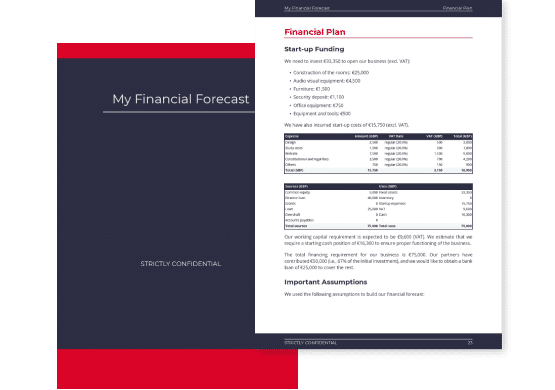
When seeking financing, your forecast will be incorporated into your business plan, which is the document you will use to present your business idea to financial partners. We'll come back to the business plan in more detail later in this guide.
Creating and updating your street food stall's forecast is an ongoing process. Indeed, having up-to-date financial projections is the only way to maintain visibility over your company's future cash flow and cash position.
Forecasting is, therefore, the financial management tool that will be with you throughout the life of your company. Once you've started trading, you'll need to regularly compare the difference between your actual accounts and your forecasts, and then adjust them to maintain visibility over your future cash flows.
What does a financial forecast look like?
Once ready, your street food stall forecast will be presented using the financial tables below.
The forecasted profit & loss statement
The profit & loss forecast gives you a clear picture of your business’ expected growth over the first three to five years, and whether it’s likely to be profitable or not.
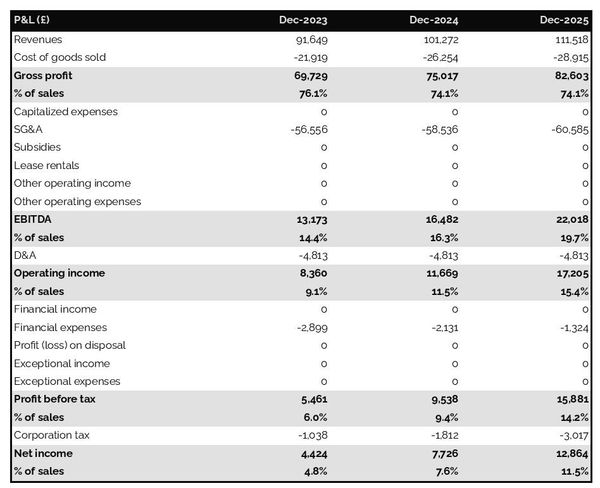
The projected balance sheet
Your street food stall's forecasted balance sheet enables you to assess your financial structure and working capital requirements.
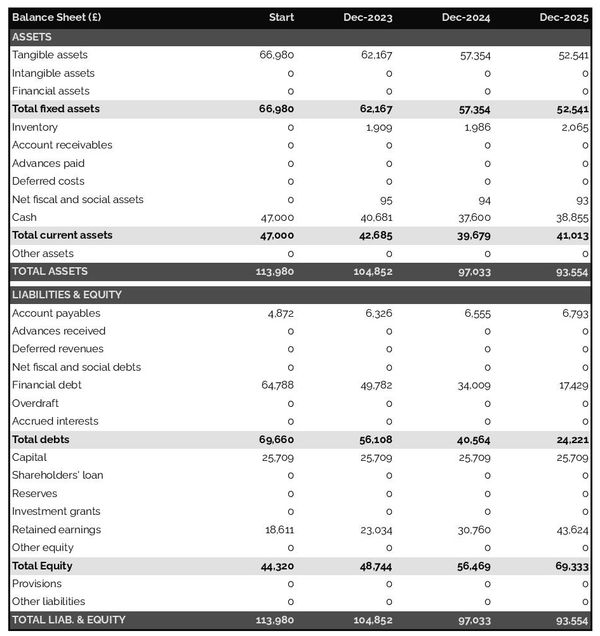
The projected cash flow statement
A projected cash flow statement to start a street food stall is used to show how much cash the business is expected to generate or consume over the first three years.
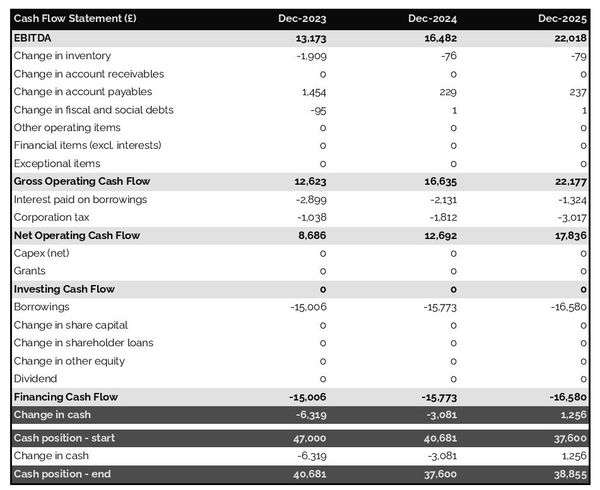
Which solution should you use to make a financial projection for your street food stall?
Using an online financial forecasting tool, such as the one we offer at The Business Plan Shop, is the simplest and safest solution for forecasting your street food stall.
There are several advantages to using specialised software:
- You can easily create your financial forecast by letting the software take care of the financial calculations for you without errors
- You have access to complete financial forecast templates
- You get a complete financial forecast ready to be sent to your bank or investors
- The software helps you identify and correct any inconsistencies in your figures
- You can create scenarios to stress-test your forecast's main assumptions to stress-test the robustness of your business model
- After you start trading, you can easily track your actual financial performance against your financial forecast, and recalibrate your forecast to maintain visibility on your future cash flows
- You have a friendly support team on standby to assist you when you are stuck
If you are interested in this type of solution, you can try our forecasting software for free by signing up here.
How do I choose a name and register my street food stall?
Now that your project of launching a street food stall is starting to take shape, it's time to look at the name of your business.
Finding the name itself is generally fairly easy. The difficulty lies in registering it.
To prevent this guide from being too long, we won't go into all the criteria you need to take into account when choosing a striking name for your street food stall. However, try to choose a name that is short and distinctive.
Once you have a name that you like, you need to check that it is available, because you cannot use a name that is identical or similar to that of a competitor: this type of parasitic behaviour is an act of unfair competition for which you risk being taken to court by your competitors.
To avoid any problems, you will need to check the availability of the name:
- Your country's company register
- With the trademark register
- With a domain name reservation company such as GoDaddy
- On an Internet search engine
If the desired name is available, you can start the registration process.
It is common to want to use the trading name as the name of the company, and to have a domain name and a registered trademark that also correspond to this name: Example ® (trading name protected by a registered trademark), Example LTD (legal name of the company), example.com (domain name used by the company).
The problem is that each of these names has to be registered with a different entity, and each entity has its own deadlines:
- Registering a domain name is immediate
- Registering a trademark usually takes at least 3 months (if your application is accepted)
- The time taken to register a new business depends on the country, but it's generally quite fast
How do I go about it?
Well, you have two choices:
- Complete all registrations at the same time and cross your fingers for a smooth process.
- Make sure to secure the domain names and trademarks. Once that's done, wait for confirmation of a successful trademark registration before moving on to register the company.
At The Business Plan Shop, we believe it's essential to prioritize securing your domain names and trademarks over the business name. This is because you have the flexibility to use a different trading name than your legal business name if needed.
Regardless, we suggest discussing this matter with your lawyer (see below in this guide) before making any decisions.
Develop your street food stall's corporate identity
The next step to launching a street food stall: defining your company's visual identity.
Your corporate identity defines how your company's values are communicated visually. It makes you unique and allows you to stand out visually from your competitors and be recognized by your customers.
Defining your corporate identity can easily be done by you and your co-founders, using the many free tools available to generate color palettes, logos and other graphic elements. Nevertheless, this task is often best entrusted to a designer or agency to achieve a professional result.
Your street food stall's visual identity will include the following elements:
- Logo
- Brand guidelines
- Business cards
- Website theme
Logo
The goal is to have stakeholders identify your business logo quickly and relate to it. Your logo will be used for media purposes (website, social networks, business cards, etc.) and legal documents (invoices, contracts, etc.).
The design of your logo must be emblematic, but it's also important that it can be seen on any type of support. To achieve this, it should be easily available in a range of colors, so that it stands out on both light and dark backgrounds.
Brand guidelines
The brand guidelines of your street food stall act as a safeguard to ensure that your image is consistent whatever the medium used.
Brand guidelines lay out the details like the typography and colors to use to represent your company.
Typography refers to the fonts used (family and size). For example, Arial in size 26 for your titles and Tahoma in size 15 for your texts.
When it comes to the colors representing your brand, it's generally a good idea to stick to five or fewer:
- The main colour,
- A secondary colour (the accent),
- A dark background colour (blue or black),
- A grey background colour (to vary from white),
- Possibly another secondary colour.
Business cards
A rare paper medium that continues to survive digitalization, business cards are still a must-have for communicating your street food stall contact details to your customers, suppliers and other partners.
In principle, they will include your logo and the brand guidelines we mentioned above.
Website theme
Likewise, the theme of your street food stall website will include your logo and follow the brand guidelines we discussed earlier.
This will also define the look and feel of the main visual elements on your website:
- Buttons
- Menus
- Forms
- Banners
- Etc.
What legal steps are needed to start a street food stall?
The next step in opening a street food stall is to look in detail at the legal and regulatory formalities.
Although it is possible to do the formalities yourself and draft some of the documents detailed here, The Business Plan Shop recommends that you seek advice on these aspects from a law firm.
Registering a trademark and protecting the intellectual property of your street food stall
One of the first things you need to do here is to protect your company's current and future intellectual property.
One way of doing this is to register a trade mark, as mentioned earlier in this guide. Your lawyer will be in a position to do the formalities for you and to help you select the classes (economic activities) and jurisdictions in which you have an interest in obtaining protection.
Your law firm can also advise you on other ways of protecting your company's intellectual property.
Preparing the legal documents for your street food stall
Your street food stall will need a set of legal and contractual documents to operate on a daily basis.
Your exact needs in this respect will depend on the country in which you are launching your street food stall and the size and legal form envisaged for the company. Once again, we highly recommend having these documents prepared by your lawyer.
As a minimum, we recommend that you have the following documents prepared:
- Employment contracts
- General terms and conditions of sale
- General terms and conditions of use for your website
- Privacy Policy for your website
- Cookie Policy for your website
- Invoices
- Etc.
Applying for licences and permits and registering for various taxes
Here too, the list of licences and business permits required for your business to operate legally will depend on the country in which you have decided to start your street food stall.
Your law firm will be able to advise you on all the regulations applicable to your business.
Likewise, your accountant will be able to assist you and take care of the formalities involved in complying with the tax authorities.
Create a business plan for your street food stall
The next step to open a street food stall: put together your business plan.
What is a business plan?
To keep it simple, a business plan comprises two crucial components:
- Firstly, a numerical part, the financial forecast (which we mentioned earlier), which highlights the initial financing requirements and profitability potential of the street food stall,
- And a written, well-argued section that presents your project in detail, aims to convince the reader of its chances of success, and provides the context needed to assess whether the forecast is realistic or not.
The business plan will enable you to verify the coherence of your project, and ensure that the company can be profitable before incurring further costs. It will also help you convince business and financial partners.
As you can see, your business plan must be convincing and error-free.
How to write a business plan for a street food stall?
Nowadays, the modern and most efficient way to write a street food stall business plan is to use startup business plan software like the one we offer at The Business Plan Shop.
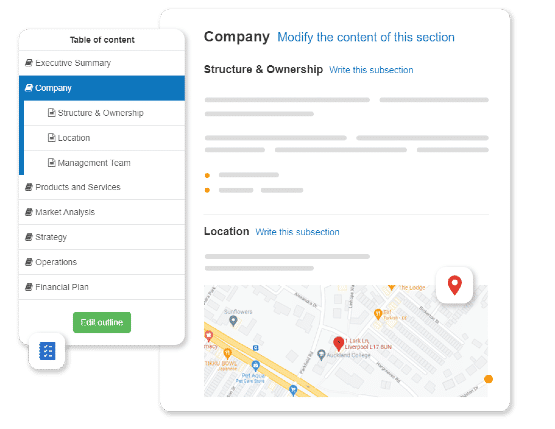
Using The Business Plan Shop to create a business plan for astreet food stall has several advantages :
- You can easily create your financial forecast by letting the software take care of the financial calculations for you without errors
- You are guided through the writing process by detailed instructions and examples for each part of the plan
- You can access a library of dozens of complete startup business plan samples and templates for inspiration
- You get a professional business plan, formatted and ready to be sent to your bank or investors
- You can create scenarios to stress test your forecast's main assumptions
- You can easily track your actual financial performance against your financial forecast by importing accounting data
- You can easily update your forecast as time goes by to maintain visibility on future cash flows
- You have a friendly support team on standby to assist you when you are stuck
If you're interested in using this type of solution, you can try The Business Plan Shop for free by signing up here.
How to raise finance for my street food stall?
Once your business plan has been drafted, you’ll need to think about how you might secure the financing necessary to open your street food stall.
The amount of initial financing required will obviously depend on the size of your street food stall and the country in which you wish to set up.
Businesses have access to two main categories of financing: equity and debt. Let's take a closer look at how they work and what sources are available.
Equity funding
At a high level, the equity of your street food stall will consist of the money that founders and potential investors will invest to launch the company.
Equity is indispensable as it provides the company with a source of long-term (often permanent) financing and demonstrates the founders' conviction in the company's chances of success, since their investments would be lost in the event of bankruptcy.
Equity investors can generate a return on their investment through dividends (which can only be paid out if the company is profitable) or capital gains on the resale of their shares (if the company is attractive enough to attract a buyer).
As you can see, the equity investors' position is extremely risky, since their capital is at risk and can be lost in the event of bankruptcy, and the company must be profitable or resellable before they can hope to generate a return on their investment.
On the other hand, the return on investment that equity investors can expect to generate by investing in a street food stall can be very substantial if the company is successful.
This is why equity investors look for start-up ideas with very high growth or profitability potential, in order to offset their risk with a high potential return on investment.
In technical terms, equity includes:
- Share capital and premiums: which represent the amount invested by the shareholders. This capital is considered permanent as it is non-refundable. In return for their investment, shareholders receive shares that entitle them to information, decision-making power (voting in general assembly), and the potential to receive a portion of any dividends distributed by the company.
- Director loans: these are examples of non-permanent capital advanced to the company by the shareholders. This is a more flexible way of injecting some liquidity into your company than doing so as you can repay director loans at any time.
- Reserves: these represent the share of profits set aside to strengthen the company's equity. Allocating a percentage of your profits to the reserves can be mandatory in certain cases (legal or statutory requirement depending on the legal form of your company). Once allocated in reserves, these profits can no longer be distributed as dividends.
- Investment grants: these represent any non-refundable amounts received by the company to help it invest in long-term assets.
- Other equity: which includes the equity items which don't fit in the other categories. Mostly convertible or derivative instruments. For a small business, it is likely that you won't have any other equity items.
The main sources of equity are as follows:
- Money put into the business from the founders' personal savings.
- Money invested by private individuals, which can include business angels, friends, and family members.
- Funds raised through crowdfunding, which can take the form of either equity or donations (often in exchange for a reward).
- Government support to start-ups, for example, loans on favourable terms to help founders build up their start-up capital.
Debt funding
The other way to finance your street food stall is to borrow. From a financial point of view, the risk/return profile of debt is the opposite of that of equity: lenders' return on investment is guaranteed, but limited.
When it borrows, your company makes a contractual commitment to pay the lenders by interest, and to repay the capital borrowed according to a pre-agreed schedule.
As you can see, the lenders' return on investment is independent of whether or not the company is profitable. In fact, the only risk taken by lenders is the risk of the company going bankrupt.
To avoid this risk, lenders are very cautious, only agreeing to finance when they are convinced that the borrowing company will be able to repay them without problems.
From the point of view of the company and its stakeholders (workforce, customers, suppliers, etc.), debt increases the risk of the venture, since the company is committed to repaying the capital whether or not it is profitable. So there's a certain distrust towards heavily indebted companies.
Companies borrow in two ways:
- Against their assets: this is the most common way of borrowing. The bank finances a percentage of the price of an asset (a vehicle or a building, for example) and takes the asset as collateral. If the company cannot repay, the bank seizes the asset and sells it to limit its losses.
- Against their future cash flows: the bank reviews the company's financial forecast to estimate how much the company can comfortably borrow and repay, and what terms (amount, interest rate, term, etc.) the bank is prepared to offer given the credit risk posed by the company.
When creating a street food stall, the first option is often the only one available, as lenders are often reluctant to lend on the basis of future cash flows to a structure that has no track record.
The type of assets that can be financed using the first method is also limited. Lenders will want to be sure that they can dispose of foreclosed assets if needed, so they need to be assets that have an established second-hand market.
That being said, terms and conditions also depend on the lender: some banks are prepared to finance riskier projects, and not all have the same view of your company's credit risk. It also depends on the collateral you can offer to reduce risk, and on your relationship with the bank.
In terms of possible sources of borrowing, the main sources here are banks and credit institutions.
In some countries, it's also possible to borrow from private investors (directly or via crowdlending platforms) or other companies, but not everywhere.
Takeaways on how to finance a street food stall
Multiple options are available to help you raise the initial financing you need to launch your street food stall.
There are two types of financing available to companies. To open a street food stall, an equity investment will be required and may be supplemented by bank financing.
Track your actuals against your forecast
You've reached the end of the road and are ready to launch your street food stall.
Congratulations and welcome to the fantastic world of entrepreneurship! Celebrate the work you've done so far, and get back to work quickly, because this is where the real work begins.
Your first priority will be to do everything you can to make your business sustainable (and thus avoid being one of the 50% of start-ups that fail within five years of launching).
Your business plan will be your best ally to ensure that you're on track to achieve your objectives, or to help rectify the situation if necessary.
The key to financial management is to regularly compare your actual accounting data with your street food stall forecasts, in order to be able to :
- Quantify the gaps between what you planned and what you achieved
- Adjust your financial forecasts as the year progresses to maintain visibility over your future cash flow
No one can predict the future with certainty, but by closely monitoring the variances between actuals and forecasts, regularly adjusting your forecasts and simulating several scenarios, you can prepare your street food stall for the worst while hoping for the best.
It's the only way to keep an eye on your cash flow and actively manage the development of your street food stall, ultimately reducing the risk to your company.
There's nothing worse than waiting for your company's annual accounts to close, which can be many months after the end of your financial year (up to nine months in the UK for example), only to realize that you've fallen far short of your forecasts for the past year, and that your street food stall urgently needs a cash injection to keep going.
That's why it's strongly recommended to use a financial planning and analysis solution that integrates forecasting, scenario analysis, and actuals vs. forecast tracking, like we do at The Business Plan Shop with our financial dashboards.
Key takeaways
- This guide outlines the 15 key steps to open a street food stall.
- The financial forecast is the tool that will enable you to validate the financial viability of your business idea.
- The business plan is the document that will enable you to approach your financial and commercial partners to convince them of the strengths of your project and secure the financing you need to launch your business.
- The real work begins once you've launched your business, and the only way to maintain visibility of your company's future cash flow is to keep your forecast up to date.
- Using a financial planning and analysis platform that combines forecasting, business planning and actual vs. forecast tracking and monitoring, such as The Business Plan Shop, makes the process easier and reduces the risks involved in starting a business.
We hope this guide has helped you understand how to start a street food stall. Please don't hesitate to contact us if you have any questions.
Also on The Business Plan Shop
Do you know someone who wants to know how to open a street food stall? Share our guide with them!
